How to Attract Pollinators to the Garden (Even in the Desert)

Bugs, birds, and butterflies are common sights around our backyard gardens. If not, then we’re in trouble when it comes to producing the fruits and vegetables we enjoy. Their importance to our gardens are so critical. If we aren’t seeing them as much as we’d like, let’s take a look at how we can do more to welcome them into our gardens.
What is pollination? Pollen is a dust or powder that comes from the male parts of a flower. Pollination occurs when this pollen is carried to the female parts of the plant to initiate the reproductive process leading to fruit or vegetable production.
Why Do We Need Pollinators?
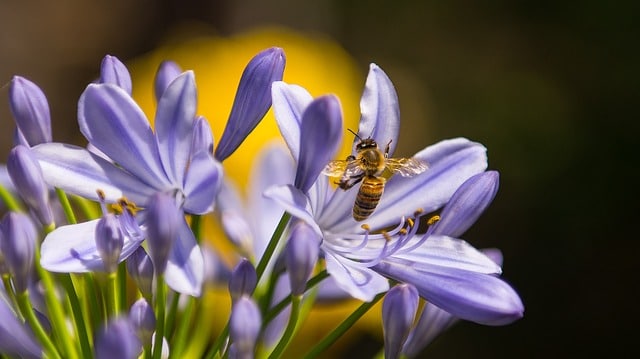
Without pollinators, it becomes more difficult for natural pollination to occur. Pollinators help ensure that pollen will successfully be dispersed among flowers. As pollinators are diminished, manual pollination or relying on winds to move the pollen become the means and generally less reliable. Pollinators are a necessary part of plant reproduction and playing a part in guaranteeing that we have the produce we enjoy.
What are Some Common Pollinators?
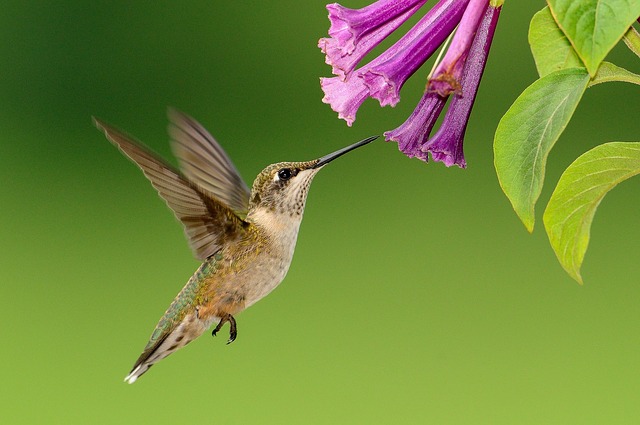
Here are some of the common pollinators found in hot climate gardens where I reside in the Southwest U.S.
Hummingbirds
Hummingbirds are a beautiful sight in the garden. They definitely have a sweet tooth and are drawn to sweet nectar. When they feed their beak and head movements can spread the pollen around from flower to flower. Not only do hummingbirds feed on nectar, they eat bugs as well. They will feed on some of those common pests we as gardeners detest, like aphids, whiteflies, ants, and mosquitoes. Another reason why spraying harmful chemicals can be detrimental to more than just the pests.
Bees
Bees are always working to gather pollen to bring back to the hive. They feed the young bee larva with the pollen they gather from flowers. Like hummingbirds, bees have a knack for sweets. They feed off nectar and other sweet syrups they may find. Bees are one of the main pollinators for much of our edibles.
Flies
I’ve always looked at the common housefly as a disgusting nuisance, but discovered that they can serve a purpose in pollination. When I first started growing Mango trees, I noticed that flies loved the mango blooms. After doing some research, I discovered that they were typically the main pollinator for mangoes. I’ve decided to agree to like flies during mango bloom season, but after that they have no place in my heart. If you have any interest in growing mango trees, check out my post: Growing Mango Trees in Hot, Dry climates.
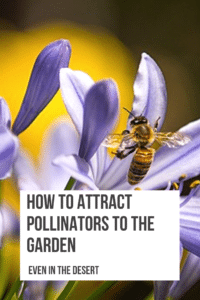
Butterflies
Since we just spoke about the ugly housefly, let’s took about something more attractive like a butterfly. Butterflies play a nice role in the world of pollinators, as well as being pleasant to the eye. The size and shape of a butterfly makes it more of a challenge for them to successfully pollinate in comparison to bees, but they still can get the job done. They can still get pollen on their legs and body that can carry from flower to flower.
Everything Else
There are a lot of other minor pollinators which consist of many other flying bugs like mosquitoes, moths, wasps, hornets, and beetles. Ants also can play a role as they march through flower pollen.
What Colors are Pollinators Drawn too?

There are definitely certain colors that pollinators are more attracted too. Bees seem to especially love yellow. I have a large Ash tree that puts off slight yellow pollen when it leafs out and the bees are swarming this tree. Anything yellow like tomato blossoms or melon blossoms really draw bees. Bees also gravitate towards blues, purples, and whites. Basil blooms are another big bee attraction in my yard. Their vision is on the blue end of the color spectrum.
Hummingbirds really go for the reds and oranges. When my Pomegranate tree is in bloom it always has a Hummingbird fluttering around the scarlet blossoms. They also like yellow, pink, and purple.
What Plants Should I Grow to Attract Pollinators?
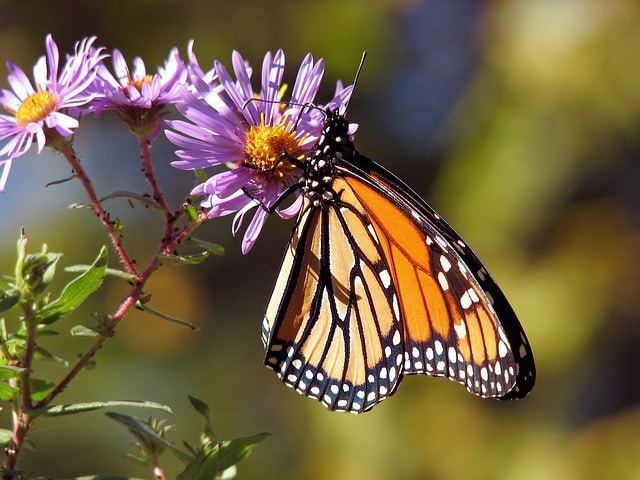
Now that we’ve gone over some of the preferred colors of our major pollinators. What should we grow to attract them? Some of these plants can be grown in temperate climates, but many are geared towards hot climates.
To attract Hummingbirds
- Pomegranate– Fruit producing tree or bush that has bright orange/red blossoms a few times per year. A drought tolerant fruit tree that acclimates well to hot climates.
- Desert Willow– A small native desert tree that produces violet bell shape flowers. Highly drought tolerant tree.
- Wolfberry-Small fruiting shrubs or bushes a variety of Goji berry. Small violet blooms.
- Fairy Duster– A small shrub native acclimated to the desert producing red fuzzy like blossoms.
- Chuparosa– Shrub native to the desert that produces narrow orange/red flowers.
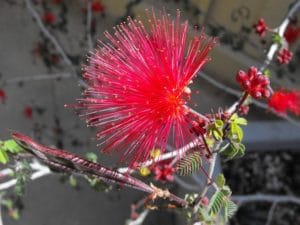
To attract Bees
- Basil– A common household herb that produces purple/blue blossoms.
- Squash/Melons– Most vines in the melon family are well suited for hot climates and produce large yellow to orange blossoms.
- Tomatos– Another edible which has small yellow flowers.
- Dandelions– Often grow naturally as a weed with a yellow blossom. Can be used as an edible.
- Sunflowers-Seeds are used as an edible. Different colors from orange to yellow. Does great in a hot climate.
- Sage– Small bushes that are suited for hot, dry climates producing purple flowers throughout the year.
- Rosemary– Another herb that has a blueish colored bloom.
- Lantana– Small flowering plant that has many different colors.

To attract Butterflies
- Butterfly Bush– It’s a colorful flowering shrub, the lavender colored varieties attract more butterflies.
- Verbena– Another small flowering plant containing purple blossoms.
- Desert Milkweed– A native desert plant that shoots up many long green stems that contain creamy colored flowers.
- Fairy Duster
- Desert Senna-beautiful yellow bloom on this drought tolerant shrub.
- Privet– Plant containing white flowers.
- Lavender– is a flowering plant known for its essential oils, but produces a purple flower. It can also repel some critters that can come to do damage to your garden.
- Citrus-Swallowtails are commonly found around citrus, the do tend to feed on some of the leaves in the caterpillar stage.
- Butterfly Weed
- Chocolate Flower

Should I Hand Pollinate?
There are times when it is necessary to hand pollinate, which means to use artificial methods for pollination. Depending on the weather conditions or time of the year, some plants may flower when pollinators aren’t readily available. When this occurs, a method that I utilize is taking a Q-tip and lightly swabbing it around the inside of the flower, moving from one to another. You could also utilize a pipe cleaner commonly used in art projects or a small paint brush.
I’m growing some varieties of the Annona family like Sugar Apple and Atemoya. Often times these varieties require hand pollination. The flower goes through stages where it converts from female to male. It takes collecting the pollen at certain times of the day in a cup, then going back and pollinating when in female stage.
In summary, pollinators are a vital component for reaping bountiful harvests. If pollinators seem scarce following some of these tips will help with creating an environment conducive to attracting pollinators into your garden.
Related Questions
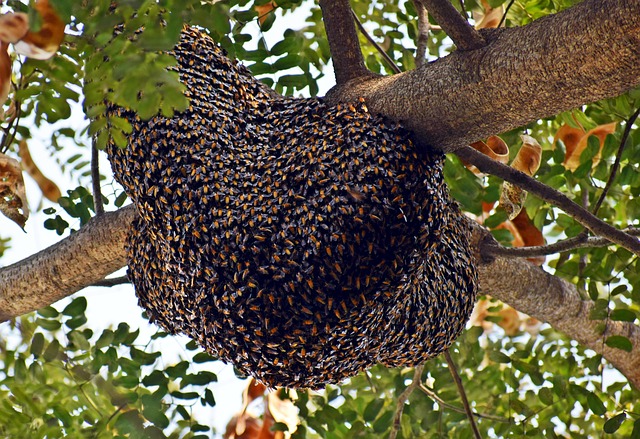
What do I do with a beehive? Even though we want to do what we can to increase the bee population, having a hive in the yard can be a scary thing. If you locate a bee hive, don’t panic. Sometimes bees can swarm and go after a few days while looking for a place to live. Call a professional bee removal service, but find one that is bee friendly. There are some professionals that will carefully remove the hives while protecting the bee population naturally. Those that use pesticides and other means kill off our natural pollinators that are so beneficial to our environment. Raising bees can be very rewarding. Here is a product to help you get started: Discover Beekeeping: A Complete Guide.
Please comment below on anything that you’ve enjoyed from this post or related to pollinators in the garden.
